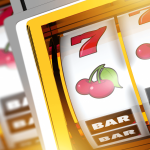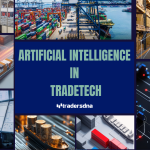Ever wondered about what is crypto mining? It might seem like something only tech wizards do, but really, it’s just how new digital money gets made and how all those online transactions get checked out. Think of it like a big, global accounting job, but instead of people with calculators, it’s super powerful computers. This whole process keeps digital currencies safe and running smoothly. If you’re curious about how it all works, or maybe even thinking about trying it yourself, you’re in the right place. We’ll break down what is crypto mining, step by step, so it makes sense to everyone.
Key Takeaways
- What is crypto mining involves computers solving tough math problems to add new transactions to a digital ledger, which then creates new cryptocurrency.
- You need specific hardware, like powerful computers, and special software to start what is crypto mining.
- Joining a mining group can help you earn more regular rewards, even if they are smaller amounts.
- It’s really important to figure out if what is crypto mining will be profitable for you, considering costs like electricity and the price of the coins.
- What is crypto mining uses a lot of energy, and it’s good to know about its environmental effects and how it helps keep digital money secure.
Understanding What Is Crypto Mining

What Is Cryptocurrency Mining?
Okay, so what’s the deal with crypto mining? Basically, it’s how new cryptocurrency gets made, and it’s also how transactions are verified on the blockchain. Think of it like this: miners are like the accountants of the crypto world, but instead of using calculators, they use powerful computers. These computers solve complex math problems, and when they solve one, they get rewarded with new coins. It’s a pretty energy-intensive process, but it’s what keeps the whole system running.
The Mechanism Behind Mining: Proof of Work
Most cryptocurrencies, like Bitcoin, use something called "Proof of Work" (PoW). This is the mechanism that requires miners to solve those tough math problems. The first miner to solve the problem gets to add a new "block" of transactions to the blockchain. The difficulty of these problems adjusts over time to keep the block creation rate consistent. It’s a bit like a race where everyone’s trying to find the right answer first. The more computing power you have, the better your chances. This is why people invest in specialized hardware. It’s all about getting that edge in the race to solve the next block. Understanding Bitcoin mining is key to understanding the whole crypto ecosystem.
Cryptocurrency Transactions and the Digital Ledger
Every crypto transaction gets recorded on a public, distributed ledger called the blockchain. When you send or receive crypto, that transaction gets bundled with others into a block. Miners then verify these blocks by solving those complex math problems. Once a block is verified, it’s added to the chain, making it permanent and unchangeable. This is what makes crypto so secure. It’s like having a digital record book that everyone can see, but no one can alter. The digital ledger ensures transparency and trust in the system. It’s a pretty cool concept when you think about it.
Mining is more than just creating new coins; it’s about maintaining the integrity of the entire network. Without miners, transactions wouldn’t be verified, and the blockchain wouldn’t be secure. It’s a critical role in the crypto world.
Essential Hardware for What Is Crypto Mining
Selecting Your Mining Hardware
Choosing the right hardware is a big deal when you’re getting into crypto mining. It’s not just about picking the most expensive thing; it’s about finding the sweet spot between cost, power consumption, and hash rate. Think of it like buying a car – you want something that’s reliable, efficient, and gets the job done without breaking the bank. For example, if you’re mining Bitcoin, you’ll need specialized ASIC miners because GPUs just can’t compete anymore. But if you’re mining a different coin, GPUs might be a better option. It really depends on the algorithm and the network difficulty.
Hardware Requirements: From CPUs to ASICs
Back in the day, you could mine crypto with just your computer’s CPU. Those days are long gone. Now, it’s all about GPUs and ASICs. GPUs (Graphics Processing Units) are good because they can handle a lot of calculations at once, making them way better than CPUs for mining. But ASICs (Application-Specific Integrated Circuits) are even better because they’re built specifically for mining. They’re super efficient at solving those complex math problems, but they’re also expensive and can only mine one type of coin.
It’s important to remember that mining hardware isn’t a one-time purchase. You’ll need to keep upgrading as the network difficulty increases and new, more efficient hardware comes out. Otherwise, you’ll quickly find yourself losing money.
Optimizing Your Mining Operations
Once you’ve got your hardware, you need to keep it running smoothly. That means keeping it cool, clean, and up-to-date. Overheating is a miner’s worst nightmare because it can damage your equipment and reduce its lifespan. So, invest in good cooling systems, like fans or liquid coolers. Also, make sure to clean your hardware regularly to prevent dust buildup. And don’t forget to update your mining software and firmware to get the latest performance improvements. Here are some key things to keep in mind:
- Cooling: Keep your hardware cool to prevent damage and maintain efficiency.
- Cleaning: Regularly clean dust from fans and heatsinks.
- Updates: Keep your software and firmware up-to-date.
Software and Setup for What Is Crypto Mining
Getting the Best Mining Software
Choosing the right mining software is super important for making your mining setup work well. This software connects your mining hardware to the blockchain, handles the mining, and links you to mining pools. Think of it as the brain of your operation. You want something that’s easy to use, especially if you’re just starting out. Messing up the settings can cost you money, so keep it simple. Look for software that automatically switches algorithms, works on different platforms, has a simple interface, lets you keep an eye on your rig, and helps you track how much you’re making. There are a lot of options out there, so do your homework. For example, you can use EasyMiner if you are a beginner.
Here are some popular choices:
- EasyMiner: Simple GUI, good for beginners.
- NiceHash: Functions as software and marketplace, user-friendly.
- Hive OS: Linux-based, good for large-scale operations.
- Kryptex: Easy to use, tracks profitability.
- Cudo Miner: Automated algorithm switching, multi-platform support.
- CGMiner: Open-source, command-line tool for advanced users.
- XMRig: Efficient for Monero mining.
- T-Rex Miner, TeamRedMiner, GMiner, NBMiner, Claymore Dual Miner: Specialized for GPU mining.
Picking the right software can really boost your mining game. It’s not just about getting the hardware; the software is what makes it all run smoothly and efficiently. Don’t skimp on this part!
Setting Up a Secure Crypto Wallet
Once you start mining, you need a safe place to store your earnings. That’s where a crypto wallet comes in. Think of it as your digital bank account. You’ll need to set one up before you start mining, so you have somewhere to send your mined coins. There are a few types of wallets to choose from:
- Hardware wallets: These are physical devices that store your crypto offline, making them super secure. They’re like a USB drive for your coins.
- Software wallets: These are apps you can install on your computer or phone. They’re convenient, but not as secure as hardware wallets.
- Online wallets: These are web-based wallets that you can access from anywhere. They’re the least secure option, so be careful.
No matter which wallet you choose, make sure to enable two-factor authentication (2FA) for extra security. This adds an extra layer of protection to your account. Also, keep your wallet’s private keys safe. If someone gets their hands on your private keys, they can steal your coins.
Joining a Mining Pool
Mining solo can be tough, especially with all the competition out there. That’s why a lot of miners join mining pools. A mining pool is a group of miners who combine their computing power to increase their chances of finding a block. When the pool finds a block, the rewards are split among the miners based on how much computing power they contributed. Joining a pool has a few benefits:
- More consistent income: Instead of waiting months to find a block on your own, you’ll get regular payouts from the pool.
- Lower variance: Your income will be more predictable, which makes it easier to plan your finances.
- Easier setup: Mining pools usually provide easy-to-use software and instructions.
Before you join a pool, do some research to make sure it’s reputable. Look for pools with low fees, good uptime, and a large number of miners. Some popular mining pools include Slush Pool, F2Pool, and AntPool. Remember, it’s all about finding a balance between risk and reward. Don’t fall for anything that sounds too good to be true, as these can be red flags for potential scams.
Financial Considerations for What Is Crypto Mining
Calculating Your Potential Profitability
Okay, so you’re thinking about diving into crypto mining? Awesome! But before you drop a bunch of cash on hardware, let’s talk about the money side of things. It’s not as simple as just plugging in a machine and watching the crypto roll in. You gotta crunch some numbers first.
First off, you’ll want to use a mining profitability calculator. These tools ask for info about your hardware, electricity costs, and the current price of the cryptocurrency you want to mine. They’ll give you an estimate of how much you could potentially earn. Keep in mind, it’s just an estimate. Crypto prices are wild, and mining difficulty can change, so don’t take it as gospel.
Here’s a basic breakdown of what you need to consider:
- Hardware Costs: How much are you spending on your mining rig? This is a big upfront cost.
- Electricity Costs: This is an ongoing expense, and it can really eat into your profits. Find out how much you pay per kilowatt-hour.
- Mining Pool Fees: If you join a mining pool (which you probably should), they’ll take a small cut of your earnings.
- Cryptocurrency Price: The higher the price, the more you earn. But remember, prices can crash just as easily as they can rise.
- Block Rewards: The amount of crypto you get for mining a block. This can change over time.
- Hardware Depreciation: Your mining hardware won’t last forever. Its value goes down as new, better stuff comes out.
It’s easy to get caught up in the excitement of crypto mining, but don’t forget to do your homework. Calculate your potential profitability carefully, and be realistic about the risks. Mining can be profitable, but it’s not a guaranteed get-rich-quick scheme.
Understanding Investment and Risks
Alright, let’s get real about the risks involved in crypto mining. It’s not all sunshine and rainbows. There are some serious downsides you need to be aware of before you jump in.
- Market Volatility: Crypto prices are all over the place. What’s profitable today might not be profitable tomorrow. Be prepared for the possibility of losing money.
- Increasing Difficulty: As more people start mining a particular cryptocurrency, the difficulty of mining increases. This means you need more computing power to earn the same amount of crypto.
- Hardware Obsolescence: Mining hardware becomes outdated quickly. New, more efficient machines are always coming out, which means your old hardware will become less profitable over time.
- Regulatory Risks: Governments around the world are still figuring out how to regulate cryptocurrencies. There’s a risk that new regulations could make mining more difficult or even illegal in some areas.
Mining requires a significant upfront investment in hardware and ongoing expenses for electricity. The increasing difficulty of mining algorithms also means that individual miners face stiff competition from large mining pools and operations.
Choosing the Right Cryptocurrency to Mine
So, you’ve decided you want to mine crypto, but which one should you choose? There are a ton of different cryptocurrencies out there, and not all of them are created equal when it comes to mining.
Here are some things to consider when choosing a cryptocurrency to mine:
- Profitability: This is the most obvious factor. Look for cryptocurrencies that are currently profitable to mine with your hardware.
- Mining Difficulty: Some cryptocurrencies are much harder to mine than others. If you’re just starting out, you might want to choose a cryptocurrency with a lower difficulty.
- Market Liquidity: Make sure there’s a good market for the cryptocurrency you’re mining. You want to be able to easily sell your earnings for fiat currency (like USD or EUR).
- Community Support: A strong community can be a good sign that a cryptocurrency is worth mining. Look for active forums and social media groups.
- Long-Term Potential: Consider the long-term prospects of the cryptocurrency. Is it likely to be around for the long haul, or is it just a flash in the pan?
It’s also worth noting that some cryptocurrencies are easier to mine with certain types of hardware. For example, Bitcoin is typically mined with ASICs (Application-Specific Integrated Circuits), while other cryptocurrencies can be mined with GPUs (Graphics Processing Units).
Operational Best Practices for What Is Crypto Mining
Maintaining Mining Efficiency
Okay, so you’ve got your mining rig all set up. Now what? It’s not just about letting it run and hoping for the best. You need to keep things running smoothly and efficiently if you want to actually make some money. Efficiency is key in crypto mining.
Here’s what I’ve learned about keeping my mining operation humming:
- Cooling is Crucial: Overheating is your enemy. Make sure you have adequate cooling. I started with just regular fans, but I’m thinking about upgrading to liquid cooling. It’s pricier, but it’s way more effective. I’ve found that keeping the intake air temperature between 50-77°F (10-25°C) is ideal.
- Dust is a Killer: Dust buildup can seriously mess with your cooling. Clean your rigs regularly. I try to do it at least once a month, but honestly, sometimes it’s longer. A can of compressed air is your best friend.
- Software Updates are Important: Keep your mining software, firmware, and drivers updated. New versions often have performance improvements and bug fixes. I almost forgot to update my mining software last month, and my hash rate dropped noticeably until I did.
Keeping your mining operation efficient isn’t a one-time thing. It’s an ongoing process. You need to constantly monitor your hardware, tweak your settings, and stay on top of maintenance.
Staying Informed and Adapting
The crypto world moves fast. What’s profitable today might not be tomorrow. You need to stay informed about market conditions, new technologies, and regulatory changes. I spend way too much time reading crypto news, but it’s worth it.
Here’s what I try to keep an eye on:
- Market Trends: Which coins are hot? Which are not? Is the difficulty increasing? These things affect your profitability.
- New Hardware: New, more efficient hardware is always coming out. You don’t need to upgrade constantly, but you should be aware of what’s available.
- Regulatory Changes: Governments are still figuring out how to deal with crypto. Keep an eye on any new laws or regulations that could affect your mining operation. Proactively responding to regulatory shifts is important.
Understanding the Basics of What Is Crypto Mining
Okay, let’s get back to basics. What is crypto mining, really? It’s basically using your computer to solve complex math problems to verify transactions on a blockchain. When you solve a problem, you get rewarded with cryptocurrency. It’s like a digital treasure hunt.
Here’s a simplified breakdown:
- Transactions Happen: People send and receive cryptocurrency.
- Transactions are Bundled: These transactions are grouped into blocks.
- Miners Verify: Miners use their computers to verify these blocks.
- Block is Added: Once verified, the block is added to the blockchain.
- Miners Get Rewarded: Miners receive cryptocurrency for their work.
It sounds complicated, but the main thing is that crypto mining is what keeps the whole system running. Without miners, there would be no blockchain, and no cryptocurrency.
The Impact of What Is Crypto Mining

Environmental Considerations of Mining
Okay, so let’s talk about the elephant in the room: crypto mining and the environment. It’s no secret that Bitcoin mining can use a LOT of energy. We’re talking about serious power consumption, which often translates to a significant carbon footprint. It’s a complex issue, because it’s not just about the amount of energy used, but where that energy comes from. If miners are using renewable sources, that’s a whole different story than if they’re relying on coal-fired power plants.
- Energy consumption is a major concern.
- The source of energy matters a lot.
- E-waste from outdated hardware is also a problem.
It’s easy to point fingers, but the reality is that the crypto industry is starting to wake up to these issues. There’s a growing push for more sustainable mining practices, and that’s a good thing. Innovation in this area is key to a greener future for crypto.
The Role of Mining in Blockchain Security
Now, let’s flip the script a bit. While the environmental impact is a valid concern, it’s also important to remember that mining plays a critical role in keeping blockchain networks secure. Think of miners as the guardians of the blockchain. They’re the ones who verify transactions and add new blocks to the chain. Without them, the whole system would be vulnerable to attacks. The Proof of Work mechanism behind mining is designed to make it incredibly difficult for anyone to tamper with the blockchain, and that’s a big deal when you’re talking about decentralized currencies.
Future Trends in Crypto Mining
So, what does the future hold for crypto mining? Well, things are changing fast. As the price of crypto fluctuates, so does the profitability of mining. We’re seeing a shift towards more energy-efficient mining methods, like Proof of Stake, which require less computational power. There’s also a lot of buzz around renewable energy sources and ways to repurpose the heat generated by mining operations. Cloud mining and mining pools are also becoming more popular, allowing smaller players to participate and stay competitive. It’s a dynamic landscape, and it’s anyone’s guess where it will all lead, but one thing is for sure: crypto mining isn’t going anywhere anytime soon.
| Trend | Description
Wrapping Things Up: Your Crypto Mining Adventure
So, we’ve gone through a lot about crypto mining. It’s not just about getting rich quick, even though that’s what some people think. It’s a real process that helps keep digital money systems working. You need to know what you’re doing, have the right equipment, and be ready for things to change. The world of crypto moves fast, with new tech and rules popping up all the time. If you’re going to get into mining, you have to keep learning and be ready to adjust. That’s how you stay in the game. With some good research and smart choices, you can definitely find your way in this exciting space.
Frequently Asked Questions
What exactly is crypto mining?
Crypto mining is like a digital treasure hunt where powerful computers solve tough math puzzles. When a computer solves a puzzle, it helps add new transactions to a big digital book called a blockchain. As a reward for this work, the miner gets some new cryptocurrency. It’s how new digital money is made and how the whole system stays safe and sound.
What kind of equipment do I need for crypto mining?
You need special computer gear to mine crypto. In the old days, regular computer parts like your CPU were enough. But now, you usually need strong graphics cards (GPUs) or super-fast machines called ASICs. You also need special software to run the mining process and a digital wallet to keep your mined coins safe.
Can I really make money from crypto mining?
Mining can be profitable, but it’s not a sure thing. You have to think about how much electricity your machines will use, how much your equipment costs, and how much the cryptocurrency you’re mining is worth. Sometimes, the cost of electricity can be more than the value of the coins you mine. It’s important to do your homework and calculate everything before you start.
What’s a mining pool and why should I join one?
A mining pool is a group of miners who work together. Instead of trying to solve the tough math puzzles all by yourself, you join forces with others. When the pool solves a puzzle and earns a reward, everyone in the pool gets a small piece of it. This makes it more likely to earn rewards regularly, even if they are smaller amounts.
Does crypto mining hurt the environment?
Crypto mining uses a lot of electricity, which can be bad for the environment if that electricity comes from sources that pollute. Also, the special mining computers can get old quickly and turn into electronic waste. People are working on new ways to mine that use less energy and are better for our planet.
Is crypto mining legal?
The rules about crypto mining are different everywhere. In some places, it’s completely fine and legal. In others, there might be special taxes or rules you have to follow. And in a few places, it might even be against the law. It’s super important to check the laws where you live before you start mining.










